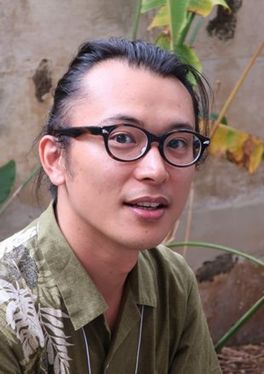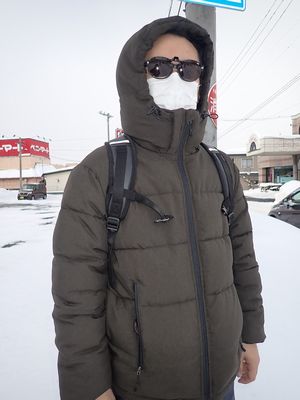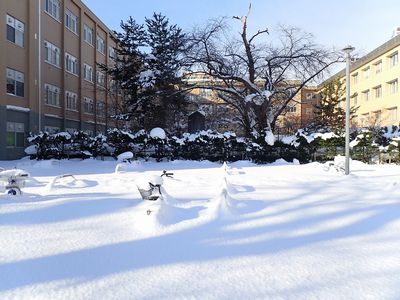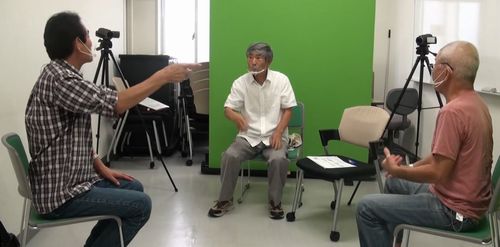Interview with Former Liberal Arts Communicator NIINAGA Yuto, Associate Professor at the Faculty of Humanities and Social Sciences, Hirosaki University <Part 1>

We have interviewed Dr. NIINAGA who became an associate professor at Hirosaki University from a liberal arts communicator. His interview Part 1, looking back his career as the liberal arts communicator, deals with job-hunting experiences and his activities at Hirosaki University.
The career path I envisioned when serving as a liberal arts communicator
I had only my mind set on a tenured (permanently employed) academic position at a university. As a linguistics specialist studying dialects, working in business or enterprise was not really something I ever imagined doing. Finding a post at a research institute was a possible option, but very few are available other than those at the National Institute for Japanese Language and Linguistics (NINJAL). From what I have seen, people who study the humanities and the social sciences in Japan usually enter the corporate world as fresh university graduates. One can still secure a job after completing a master’s degree, but the window closes almost completely to jobs in business for those who proceed to a Ph.D. The situation is even worse for a person like me who specializes in a niche subject. I had a Ph.D. and was a postdoctoral researcher when I was working as a liberal arts communicator, so private firms were unlikely to hire me.
Hirosaki University’s awareness of liberal arts communicators
When I was interviewed for the position I currently hold at Hirosaki University, no one asked about my work as a liberal arts communicator. Sometime later, I asked faculty members with whom I regularly interact if they knew of the work, but they most knew nothing. The only exception was a lecturer who had served as a core member of the hiring team during my interview process. She had found out about my being a liberal arts communicator while searching online for articles written by or about me and coming across features posted by NINJAL and the National Institutes for the Humanities (NIHU). But since she was only checking my background as part of the recruitment proceedings, I would say that liberal arts communicators are virtually unknown to the public.
Hirosaki University offers an annual omnibus course in which several professors and lecturers each give lectures relating to their area of expertise. Taking advantage of this opportunity, in my class, I talk about liberal arts communicators with freshmen who have yet to decide their majors. Almost none of the roughly 100 students who take the class each year have ever heard of the post. They often remark they never knew that this type of post existed. I also receive questions about how to become a liberal arts communicator.
But I would say that liberal arts communicator is not an occupation one should set as a career objective. Whereas science communicators in the natural sciences have job opportunities at the National Museum of Nature and Science (NMNS) or other science museums nationwide, professional posts as liberal arts communicators are limited to NIHU’s six institutes and are only available on limited-term contracts. The position is therefore not a goal to aim for. Currently, it is better to consider it a transitional step before securing a full-time position related to one’s field of expertise.
Needless to say, the activities of what we now call liberal arts communicators—specialists sharing their knowledge of the liberal arts through public lectures and publication of books for the general public—have existed even before the liberal arts communicator positions were established by NIHU. Communicating about liberal arts through such activities is, I would say, inherent in what all scholars do.
Changes I experienced after coming to Hirosaki University
I work at Hirosaki University simply because my application for the position open here was accepted. As a specialist in linguistics with a focus on Japanese dialects, I am a bit of an anomaly: I belong neither to the mainstream of linguistics nor to Japanese language studies (or Japanese linguistics), since linguists rarely focus on Japanese dialects and scholars of Japanese dialects typically have a background in Japanese language studies. I was in between two disciplines, so there were very few posts for which I could apply. I was ready to go anywhere, Japan or abroad, if an institution was willing to employ me.
My arrival at Hirosaki University two years ago coincided with the start of the novel coronavirus infection pandemic. I quickly grew accustomed to teaching my classes online as a matter of course, despite having zero prior experience.
As for changes in my living environment, Aomori is covered with snow for three months of the year, so I also soon became accustomed to snow. I now frequent the countless hot springs that are available in this area in the foothills of the Ōu Mountain Range. Even ordinary public bathhouses here are supplied with natural hot-spring water and charge only around 300 to 400 yen. Whenever I feel tired, I visit these spots to recharge.
On the research front, I have slowly begun to study Hirosaki’s dialect and sign language.

Braving the bitter winter cold

Hirosaki University’s bicycle parking space in the winter
The standout and distinctive features of Hirosaki University
Being the only national university in Aomori Prefecture means Hirosaki University is the sought-after goal for students from top-tier local schools who choose to stay in their home prefecture. In the humanities, folklore studies and archaeology are especially popular. Archaeology students and researchers can pursue their studies under the guidance of top scholars in the field, as Aomori is home to many Jо̄mon period (ca 10,000 BC–ca 300 BC) sites including the Sannai Maruyama site.
I myself have started to get into research on the dialects in Aomori. I hope that high school students interested in this subject will come to Hirosaki University to join me.
What I learned after becoming a university teacher
Though Hirosaki University has doctoral courses for medicine, science and technology, and fields in the natural sciences, it offers only one master’s course specifically tailored to the humanities. Consequently, if a student is seeking to earn a Ph.D. to become a scholar of Japanese linguistics, I would introduce to him or her a professor at a different university.
I noticed after coming to Hirosaki University that small-scale national universities in rural Japan can only assign one faculty member per seminar in a particular discipline. In contrast, at large metropolitan universities, typically three to four faculty members from relevant fields are involved in every seminar. For instance, the University of Tokyo—which is located in a megalopolis—has three, and five, dedicated professors and lecturers in its Department of Japanese Linguistics and Department of Linguistics, respectively. But at Hirosaki University, I am the only advisor of the Japanese Language Studies Seminar while one other professor oversees the Linguistics Seminar. Smaller universities thus offer fewer courses relative to the size of faculty, consequently limiting the scope of knowledge that students can acquire. This is why I would suggest students seriously aspiring to pursue research not join my seminar but apply for a master’s course at a different graduate school where they can surround themselves with multiple full-time teaching staff members and a diverse range of students.
Another realization I had is that working at a small university means professors and lecturers have fewer opportunities to communicate with other specialists in their own fields. Faculty members, therefore, need to proactively participate in study meetings and academic conferences to engage in interchange with scholars at other institutions. Otherwise, they might gradually grow self-complacent and become a victim of the “big fish in a small pond” syndrome.
I now also understand, to some extent, the criteria employers apply when filling vacancies. Every rejection letter I received while in search of a teaching position left me frustrated. I would fume at the boilerplate “we wish you success in pursuit of your career” message and complain that they should recruit me now if they really care about my future. But once I sat down at the other end of the interview room, I saw that choosing one person from a pile of applicants required rejecting scores of other candidates (and wishing them success). Further, while advanced performance in one’s field of specialization is a prerequisite, highly regarded applicants these days tend to be those willing to, and have the competence for, handling administrative tasks (e.g., contributing to the local community or handling duties related to entrance exams). Faculty members involved in the hiring process frequently agree that they ask themselves if they want to work with the interviewee. A successful candidate must, for years to come, work with others to deal with university affairs. Interviewers accordingly check the prospective colleague’s “vibe,” so to speak, to ascertain whether he or she is accepted as a permanent colleague. I sympathize with candidates, however, for it is impossible to tell the personality traits the hiring team is seeking.

Scene of three people conversing in the Hirosaki variant of Japanese Sign Language
(Interviewer: OHBA Go, Researcher, Center for Innovative Research, National Institutes for the Humanities)
NIINAGA Yuto Japanese Linguistics Seminar, Faculty of Humanities and Social Sciences Associate Professor, Hirosaki University
NIINAGA obtained a doctoral degree in literature from the Graduate School of Humanities and Sociology, the University of Tokyo in 2014. After serving as a part-time lecturer at Seijo University and other universities, he assumed his present position in April 2020. He worked as a NIHU liberal arts communicator from 2017 to 2020. His research interests are descriptive linguistics and Northern Ryūkyū dialects (especially the Yuwan dialect of Amami-Ōshima Island, Kagoshima Prefecture and the dialect of Kudaka Island, Okinawa Prefecture).

